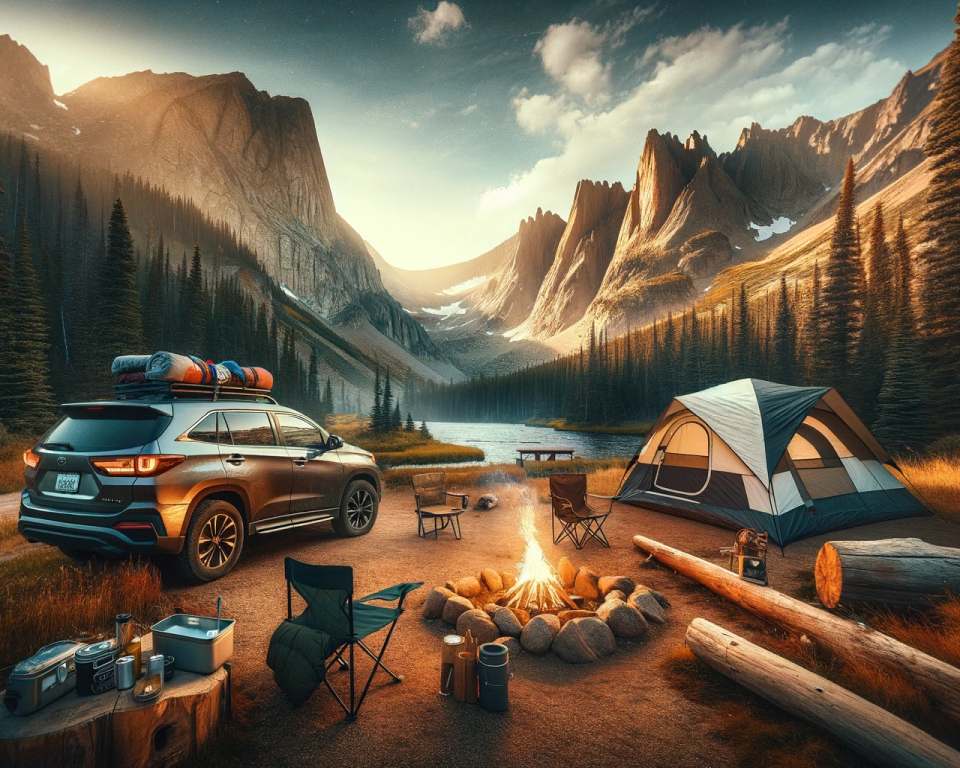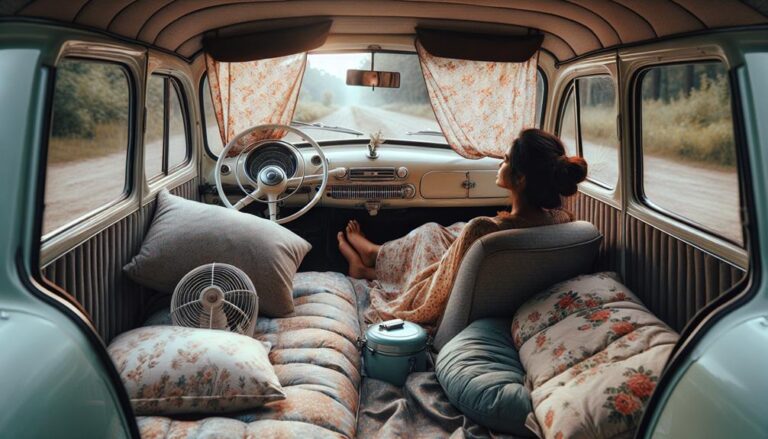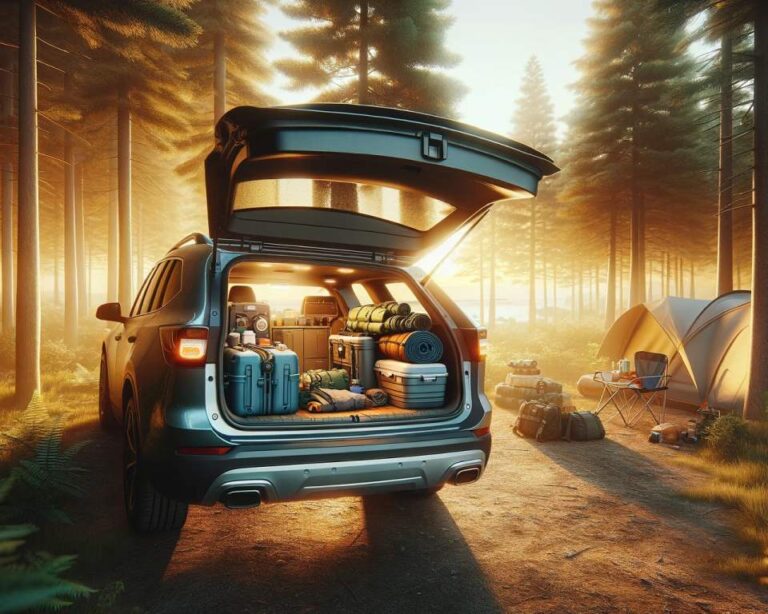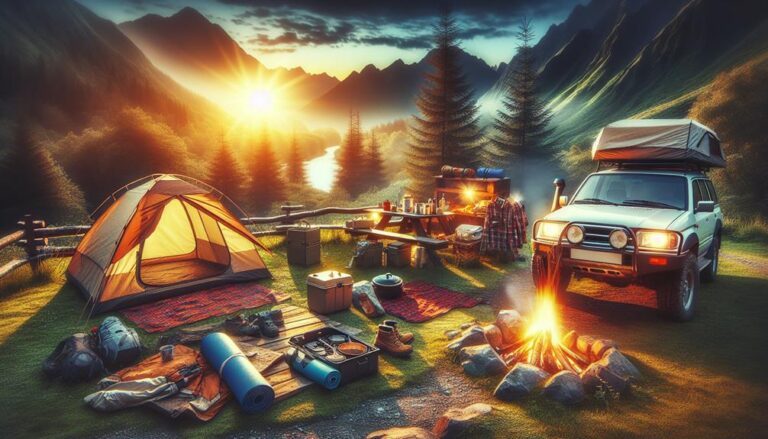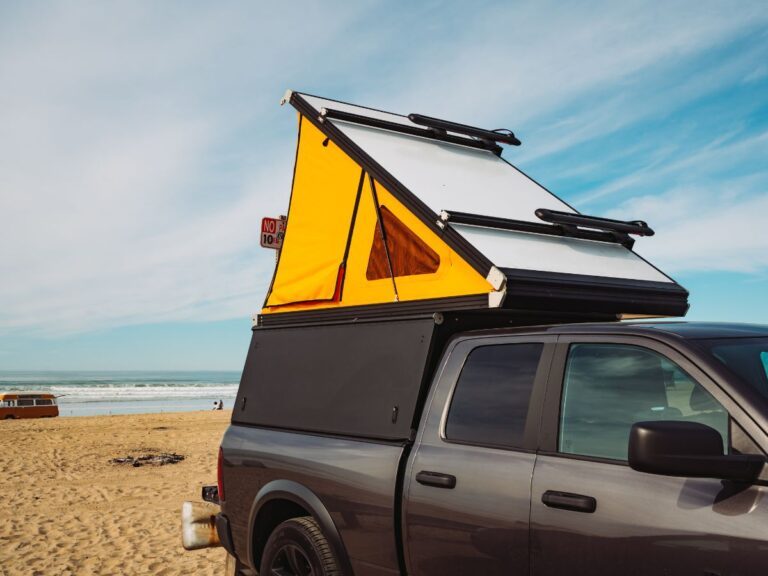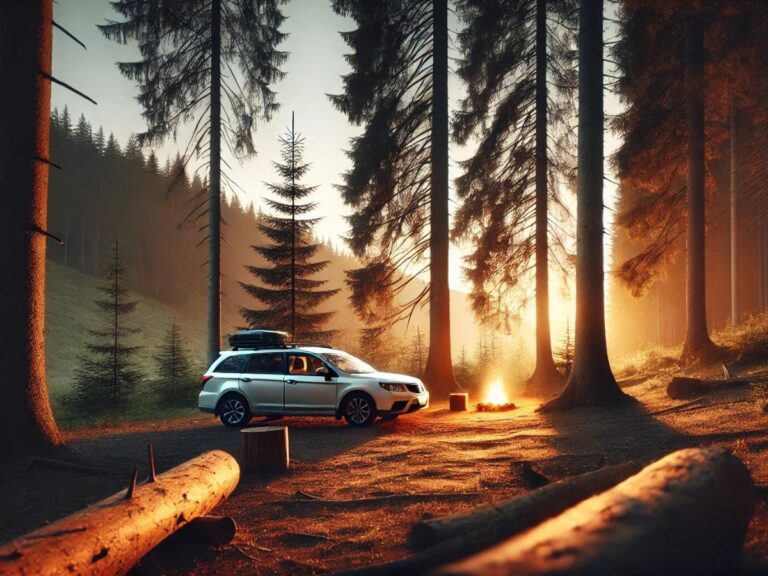Understanding Car Camping Legality: A Comprehensive Guide to Regional Rules
Car camping has become a popular choice for travelers seeking an affordable and convenient way to explore the United States. However, before embarking on your car camping adventure, it is crucial to understand the legality of this activity in different regions. While car camping is generally permitted in many public areas such as rest stops, park ‘n’ rides, and BLM lands, there are specific rules and regulations that vary from place to place.
In this comprehensive guide, we will provide you with valuable information on car camping laws, overnight parking regulations, and the legalities of sleeping in vehicles. We will explore the different types of car camping, including stealth camping, boondocking, and vanlife camping. Additionally, we will offer tips on how to find legal car camping locations using various resources, ensuring a safe and enjoyable experience.
Types of Car Camping: Understanding the Definitions
Car camping can encompass different forms, each with a specific meaning. It’s important to understand these definitions to determine which type of car camping is legal in different areas.
- Car camping: Refers to sleeping in one’s car in public areas like rest stops or parking lots. It can be done in a car, van, or truck.
- Stealth camping: Involves sleeping in your car without letting others know. This is often done to avoid being a target for break-ins or in areas where car camping is not strictly legal.
- Boondocking: Refers to free camping on public lands, usually without amenities and with a limited stay period.
- Vanlife camping: Involves living in a vehicle, often a van, and is a popular lifestyle among travelers.
Understanding these definitions will help you navigate the different rules and regulations surrounding car camping.
Finding Legal Car Camping Locations: A Guide to Resources
Finding legal car camping locations is crucial to ensure a safe and hassle-free experience. Fortunately, there are several resources available that can help you identify the best legal places for car camping.
One of the most popular resources is FreeRoam, an app that provides information on campsites and public lands where car camping is allowed. It allows users to filter results based on specific criteria such as BLM land or Forest Service land. Another useful platform is Campendium, which offers user-submitted campsite reviews and valuable insights for car campers.
FreeCampsites.net is another great resource that provides free campsite information across the United States. It offers a comprehensive database of campgrounds and public lands that allow car camping. Additionally, The Dyrt is a popular app that includes campsite reviews, photos, and comprehensive campground listings.
If you’re looking for international car camping locations, iOverlander is a reliable app that provides information on legal camping spots worldwide.
It’s essential to use multiple resources to ensure comprehensive coverage of available legal car camping locations. Each platform has its own database, and new campsites are constantly added by the user community. By cross-referencing information from different sources, you can gather more accurate and up-to-date data on legal car camping options.
In addition to these online resources, there are also several physical locations where car camping is typically allowed. Rest stops, truck stops, Walmart parking lots, and 24-hour stores and restaurants often allow car camping. However, it’s always essential to check for any specific restrictions or guidelines at each location.
“Finding the best legal places for car camping is crucial for a safe and enjoyable experience on the road. By using reliable resources like FreeRoam, Campendium, FreeCampsites.net, The Dyrt, and iOverlander, car campers can easily identify legal camping spots and explore the great outdoors.”

Remember, when exploring legal car camping locations, always follow Leave No Trace principles and respect the environment and fellow campers.
Car Camping Legality in Utah
When it comes to car camping in Utah, you’ll be glad to know that it is perfectly legal, with no statewide laws against sleeping in a vehicle unless intoxicated. This means you can explore the stunning landscapes of Utah while enjoying the convenience and affordability of car camping.
Utah’s public lands offer numerous opportunities for car camping, especially near popular destinations like Zion National Park and Salt Lake City. These areas provide picturesque scenery and a variety of camping options for outdoor enthusiasts.
Rest areas in Utah are open for overnight sleeping, and many of them even have designated areas specifically for car camping. These designated spots are equipped with amenities such as picnic tables and fire pits, making them an ideal choice for a comfortable night’s rest in the great outdoors.
Car camping in Utah allows you to immerse yourself in the beauty of the state’s natural wonders, from the red rock canyons of Moab to the breathtaking peaks of the Uinta Mountains. There’s truly something for everyone in this diverse and scenic state.
While car camping is legal in Utah, it is important to respect any posted rules or restrictions at campsites and public lands. Be sure to follow the guidelines provided by park rangers or officials to ensure a safe and enjoyable experience for yourself and other campers.
Remember, car camping is all about embracing the freedom of the open road and experiencing the beauty of nature firsthand. So pack your camping gear, set off on a memorable adventure, and create lasting memories in the picturesque landscapes of Utah!
Car Camping Legality in California
When it comes to car camping in California, it’s important to be aware of the specific regulations and restrictions in place. In particular, rest stops in California have an 8-hour time limit for stays, and overnight parking is not allowed. While this may pose a challenge for some car campers, there are alternatives available.
“Rest stops in California have an 8-hour time limit for stays, and overnight parking is not allowed.”
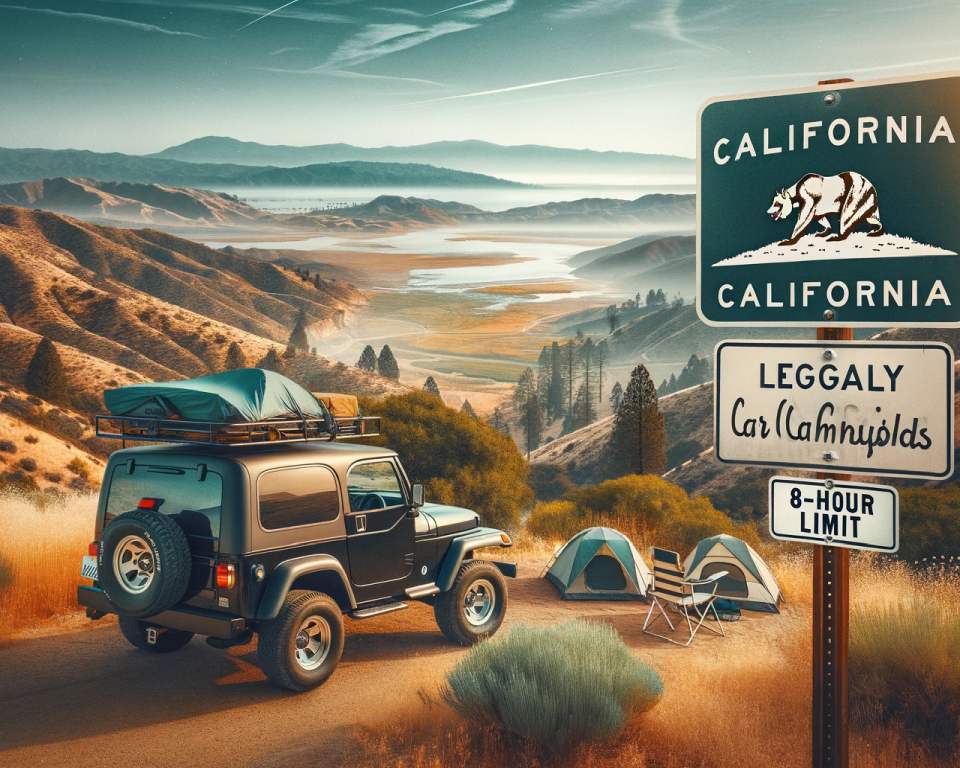
If you’re looking for overnight parking options, there are designated overnight parking lots where you can safely park your vehicle. These lots provide a convenient and legal solution for those who need to sleep in their cars overnight.
Additionally, in some cases, overnight parking may be permitted on city streets as long as your vehicle is self-contained and discreet. It’s essential to be mindful of any local regulations and signage that may affect car camping in specific areas of California.
When exploring the beautiful state of California, it’s important to respect the rules and regulations in place to ensure a positive car camping experience. By familiarizing yourself with the guidelines and finding legal parking options, you can enjoy the stunning landscapes and attractions California has to offer while staying within the bounds of the law.
Remember, the rules may vary depending on the location, so always do your research and stay informed about the specific guidelines in each area you plan to visit in California.
Car Camping Legality in Colorado
When it comes to car camping in Colorado, there are a few important things to keep in mind. Unfortunately, sleeping in cars at rest stops is not allowed in the state. However, don’t worry! There are still plenty of options available for car campers looking to explore the beautiful landscapes Colorado has to offer.
In major cities, such as Denver, there are several overnight parking lots that cater specifically to car campers. These lots provide a safe and convenient place to park for the night, allowing you to rest and recharge before continuing your adventure.
But if you’re looking to immerse yourself in nature, public lands in Colorado offer ample opportunities for car camping. Whether you’re exploring national forests, state parks, or Bureau of Land Management (BLM) areas, you’re likely to find a spot where you can set up camp.
Smaller cities and towns in Colorado are often more lenient towards car campers compared to their larger counterparts. So if you prefer a quieter and more relaxed camping experience, consider venturing away from the hustle and bustle of the big cities.
Exploring the lesser-known areas of Colorado can lead to hidden gems where you can enjoy the peace and serenity of nature without the crowds.
Research and Consult Local Authorities
When planning your car camping trip in Colorado, it’s essential to research and gather information about specific locations. Consult local authorities, such as park rangers or campground officials, to understand any regulations or restrictions that may be in place.
Gaining insights from those with local knowledge will ensure that you have accurate and up-to-date information about the areas you plan to visit. Plus, they may be able to provide recommendations for lesser-known campsites that are off the beaten path.
Enjoy the Natural Beauty of Colorado
Car camping in Colorado is an opportunity to immerse yourself in the stunning natural beauty of the state. From the towering peaks of the Rocky Mountains to the picturesque alpine lakes, you’ll find no shortage of breathtaking scenery to explore.
Whether you’re hiking through wildflower-filled meadows, fishing in crystal-clear streams, or stargazing under the wide-open sky, car camping allows you to experience the wonders of Colorado at your own pace.
So pack up your camping gear, plan your route, and get ready for an unforgettable car camping adventure in the beautiful state of Colorado!
Car Camping Legality in Oregon
When it comes to car camping, Oregon offers favorable conditions for enthusiasts looking to spend the night on the road. Rest stops in Oregon allow overnight parking for up to 12 hours, providing a convenient and legal option for car campers. Whether you’re embarking on a road trip or exploring the natural beauty of the state, car camping in Oregon can be a memorable experience.
In addition to rest stops, Oregon boasts numerous public lands where car camping is permitted. These lands offer a range of camping opportunities, from pristine forests to picturesque coastal areas. It’s important to be mindful of the specific rules and time limits at rest stops and follow the guidelines provided by park rangers or officials to ensure a safe and enjoyable experience.
For those seeking a more structured camping experience, it’s advisable to check for any restrictions or permit requirements in different areas of Oregon. Some campgrounds may have specific regulations or prerequisites for car camping, ensuring that everyone can enjoy the natural beauty of the state while preserving the environment for future generations.
When planning your car camping adventure in Oregon, consider using FreeRoam, Campendium, FreeCampsites.net, The Dyrt, and iOverlander as valuable resources to find legal and suitable car camping locations. These platforms offer a wealth of information, including user-submitted campsites, maps, and filters to help you find the perfect spot for your car camping needs.
Car camping in Oregon allows you to immerse yourself in the state’s stunning landscapes and enjoy a comfortable night’s sleep under the stars. Whether you choose to park at rest stops or explore the vast public lands, make sure to respect the rules and regulations in place and leave no trace of your presence. Happy car camping!

Stay tuned for the next section, where we’ll share valuable tips and advice for first-time car campers. We’ll cover everything from essential gear to planning your route, ensuring that you have a successful and enjoyable car camping experience.
Tips for First-Time Car Campers
Are you planning your first car camping adventure? We’ve got you covered with essential tips and advice to make your experience a memorable one.
1. Choose the Right Vehicle
The first step to a successful car camping trip is selecting a suitable vehicle. Look for one with enough space to accommodate your gear and provide a comfortable sleeping area. SUVs, vans, and trucks are popular choices for car camping.
2. Build a Comfortable Sleeping Platform
Create a cozy sleeping arrangement by building a sleeping platform in your vehicle. This will ensure a flat surface for a good night’s sleep and offer storage space underneath. Use sturdy materials like plywood and foam padding for maximum comfort.
3. Maintain Privacy and Temperature Control
Invest in window covers or curtains to provide privacy and control the temperature inside your car. This will shield you from prying eyes and help regulate heat or cold during different weather conditions.
4. Utilize Mesh Covers for Windows and Sunroofs
To enjoy fresh air while keeping bugs out, use mesh covers for windows and sunroofs. This allows for airflow and ventilation without inviting unwanted critters into your sleeping area.
5. Plan Your Route and Research Legal Car Camping Locations
Prior to hitting the road, plan your route and research legal car camping locations along the way. Identify campsites, rest stops, and designated areas where car camping is allowed. This will ensure a stress-free journey without any legal complications.
6. Pack Essential Gear
Make a checklist of essential gear to bring on your car camping trip. Items such as sleeping bags, camping stoves, water bottles, cooking utensils, and lights are crucial for a comfortable and convenient experience. Don’t forget a first aid kit, insect repellent, and toiletries!
7. Familiarize Yourself with Local Rules and Regulations
Each location may have specific rules and regulations regarding car camping. Be sure to familiarize yourself with these guidelines to avoid any legal issues or fines. Stay informed and follow the instructions provided by park rangers or officials.
With these tips in mind, you’re ready to embark on an incredible car camping experience. Enjoy the freedom, flexibility, and adventure that car camping offers while exploring the great outdoors!
Choosing the Best Car for Sleeping
When it comes to car camping, selecting the right vehicle is essential for a comfortable and enjoyable experience. With a wide range of options available, including pickup trucks, minivans, SUVs, and campervans, finding the best car for sleeping is crucial. Here are some key factors to consider:
- Size: Choose a vehicle that provides enough space for sleeping comfortably. Look for cars with spacious interiors and enough room to stretch out.
- Storage Space: Consider the amount of storage space available in the vehicle. Look for cars with ample cargo capacity to accommodate your camping gear and personal belongings.
- Amenities: Think about the amenities that are important to you. Roof racks are useful for carrying additional gear, while auxiliary plugs allow you to charge your devices on the go.
Researching and test-driving different vehicle options can help you determine which one best fits your car camping needs. Online platforms like Outdoorsy.com also offer the option to rent a car specifically designed for camping if you don’t already own a suitable vehicle.
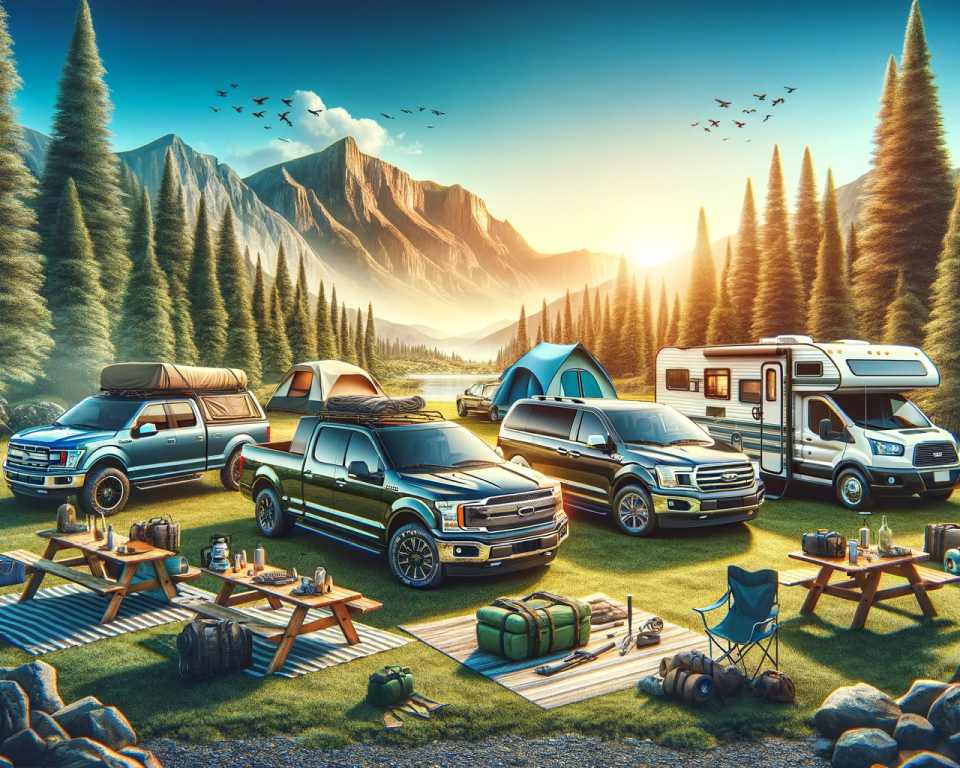
“Choosing the right car for sleeping is crucial for a comfortable car camping experience.”
By selecting a car that suits your needs and preferences, you can ensure a restful night’s sleep and make the most of your car camping adventures.
Making Your Car Comfortable for Sleeping
Creating a comfortable sleeping environment in your car is crucial for a restful night’s sleep while car camping. Here are some tips to help you make your car cozy and inviting:
1. Building a Sleeping Platform
Consider building a sleeping platform in your car to provide a level bed surface and create storage space underneath. By elevating your sleeping area, you can maximize comfort and utilize the available space efficiently.
2. Using a Comfortable Mattress
Invest in a comfortable mattress or sleeping pad to ensure a good night’s sleep on the road. Opt for a size that fits well in your car and provides adequate support and cushioning.
3. Sleeping Bag or Comforter
Choose a sleeping bag or comforter suitable for the temperature conditions you expect to encounter during your car camping adventures. Look for options that are lightweight, easy to pack, and provide the right amount of warmth.
4. Pillows for Added Comfort
Bring along pillows to enhance your comfort and provide neck and head support while sleeping in your car. Consider using removable and washable pillowcases for easy cleaning.
5. Window Covers and Curtains
Using window covers, curtains, or reflectix coverings can help block out light, provide privacy, and regulate the temperature inside your car. This will create a cozy sleeping environment and help you get a peaceful night’s rest.
6. Mesh Covers for Airflow
To ensure proper ventilation while sleeping in your car, consider using mesh covers for windows or sunroofs. These covers allow for airflow while keeping insects and bugs out, ensuring a comfortable and bug-free sleeping space.
7. Choosing Quiet and Private Spots
When selecting car camping destinations, opt for quiet and private spots whenever possible. This will minimize disturbances and help you enjoy a peaceful night’s sleep. Research and plan ahead to find secluded areas or designated car camping locations that offer tranquility and serenity.
Incorporating these tips and making your car a comfortable sleeping space will enhance your car camping experience and ensure you wake up refreshed and ready for your next adventure.
International Car Camping: Tips for Travelers
When it comes to car camping overseas, careful planning and preparation are essential for a successful trip. One of the key considerations is lightweight and compact gear that allows for easy transportation while staying within airline weight limits. To make the most of limited space, utilize compression sacks and packing cubes to maximize efficiency.
Instead of packing heavy food items, it’s recommended to purchase local ingredients and provisions at your destination. Not only does this reduce the weight of your luggage, but it also allows for a cultural culinary experience. Sampling local cuisine adds a unique flavor to your car camping adventure.
While enjoying the beauty of international landscapes, always prioritize safety and security. Be sure to familiarize yourself with the local regulations and rules regarding car camping in each country. Research and understand the availability of legal car camping locations, ensuring you camp in designated areas and respect the environment.
Embarking on an international car camping journey opens up a world of thrilling possibilities. By packing light, embracing local flavors, and being mindful of the rules, you’ll create memories to last a lifetime as you explore the great outdoors around the globe.
FAQ
What is car camping?
Car camping refers to sleeping in one’s car in public areas like rest stops or parking lots. It can be done in a car, van, or truck.
What is stealth camping?
Stealth camping involves sleeping in your car without letting others know. This is often done to avoid being a target for break-ins or in areas where car camping is not strictly legal.
What is boondocking?
Boondocking refers to free camping on public lands, usually without amenities and with a limited stay period.
What is vanlife camping?
Vanlife camping involves living in a vehicle, often a van, and is a popular lifestyle among travelers.
How can I find legal car camping locations?
You can use resources like FreeRoam, Campendium, FreeCampsites.net, The Dyrt, and iOverlander to identify legal car camping spots. Additionally, rest stops, truck stops, Walmart parking lots, and 24-hour stores and restaurants are often legal places for car camping.
What are the car camping regulations in Utah?
Car camping is legal in Utah, with no statewide laws against sleeping in a vehicle unless intoxicated. Public lands in Utah provide plenty of options for car camping.
What are the car camping regulations in California?
Car camping in California has certain restrictions, particularly at rest stops. Rest stops in California have an 8-hour time limit for stays, but overnight parking is not allowed. Overnight parking lots and select city streets may be options for car camping.
What are the car camping regulations in Colorado?
Car camping in Colorado does not allow sleeping in cars at rest stops. However, there are several overnight parking lots available in major cities. Public lands in Colorado still provide ample opportunities for car camping.
What are the car camping regulations in Oregon?
Car camping in Oregon is relatively lenient, with rest stops allowing overnight parking for up to 12 hours. There are also many public lands in Oregon that offer opportunities for car camping.
What are some tips for first-time car campers?
Tips for first-time car campers include making sure your vehicle is suitable for car camping, building a comfortable sleeping platform, using window covers or curtains for privacy and temperature control, and utilizing mesh covers for windows or sunroofs to allow for airflow.
What factors should I consider when choosing a car for sleeping?
When choosing a car for sleeping, consider the size of the vehicle, available storage space, and amenities such as roof racks and auxiliary plugs.
How can I make my car comfortable for sleeping?
To make your car comfortable for sleeping, you can build a sleeping platform, use a comfortable mattress, sleeping bag or comforter, and pillows. Window covers, curtains, or reflectix coverings can provide privacy and regulate inside temperatures, while mesh covers for windows or sunroofs can allow for airflow.
What should I keep in mind when car camping internationally?
When car camping internationally, it’s important to pack lightweight and compact gear, purchase food locally, prioritize safety and security, and research local regulations and rules regarding car camping.


